Abstract
Background
Fibromyalgia (FM) is a complex disorder characterized by widespread chronic pain and tenderness in the muscles, ligaments, and soft tissues. It is a chronic pain condition often accompanied by other symptoms and comorbidities. To effectively manage FM, it is crucial to obtain fundamental epidemiological data pertaining to the target population. Therefore, this study was conducted to elucidate the epidemiological characteristics of FM in the Korean population.
Methods
Population-based medical data of 51,276,314 subscribers to the National Health Insurance Service of Korea from 2014 to 2018 were used in this study.
Results
The overall incidence of FM ranged from 441 (2014) to 541 (2018) cases per 100,000 person-years, with a higher prevalence observed among female patients compared to male patients. The incidence gradually increased until middle age, followed by a decrease. The highest incidence rates were observed in the fifth decade of life for females and the sixth decade of life for males. When categorizing the affected parts of the body, the shoulder region was observed to be the most frequently affected. A comparison of the drug prescriptions based on medical specialty showed that antidepressants were the most commonly prescribed medications. The management of FM leads to consistent increases in medical expenses, regional disparities, and variations in prescription patterns across different medical specialties.
Fibromyalgia (FM) is a medical condition characterized by the dysregulated processing of sensory information and is often accompanied by various symptoms, including chronic widespread pain, fatigue, sleep disturbances, cognitive impairment, mood disturbances, sexual dysfunction, reduced physical function, and psychological distress [1]. Most individuals with FM tend to experience multiple symptoms. Additionally, the precise location of pain and predominant symptoms can vary over time, indicating that the symptoms may change and fluctuate throughout the course of the condition. FM often coexists with several other disorders, including regional musculoskeletal pain syndromes, such as low back pain, temporomandibular joint disorder, chronic fatigue syndrome, irritable bowel syndrome, irritable bladder syndrome, and pelvic pain [2].
The diagnosis of FM has historically been a subject of challenge and controversy, with some experts questioning its existence as a distinct entity. The diagnosis is primarily based on clinical evaluation. The 1990 American College of Rheumatology criteria state that FM can be diagnosed when pain is present in at least 11 of 18 designated tender points [3,4]. However, these criteria have been criticized for their limitations in recognizing the presence of other common symptoms associated with FM, which are crucial for accurate management of the condition [5,6]. Despite the ongoing evolution of diagnostic criteria, early diagnosis and prevention remain elusive goals for physicians. Furthermore, the disease is frequently underdiagnosed in clinical practice [7,8]. To achieve an accurate diagnosis, it is essential to have a comprehensive understanding of the prevalence, current status, and characteristics of FM. However, no nationwide population-based studies have been conducted thus far in Korea. This study aimed to analyze the nationwide prevalence and characteristics of FM, and to investigate the current status by analyzing patients' utilization of medical facilities and their prescription patterns.
This study was approved by the Institutional Review Board of the hospital (IRB ID No. WKUH 2022-02-005), and was designed as a cross-sectional study based on a population sample. All the data used in this study were stored in an electronic database and were thoroughly anonymized prior to access to ensure the privacy and confidentiality of the individuals involved.
The National Health Insurance Service (NHIS) is a non-profit organization under the Ministry of Health and Welfare in Korea. It operates as the sole public medical insurance system in the country, providing health insurance coverage for all citizens residing in Korea. The NHIS collects demographic information such as age, sex, and residential address using national identification numbers assigned to each patient. Likewise, all medical data, including disease codes, laboratory tests, prescribed medications, and hospitalization records, are stored in a computerized database managed by the Health Insurance Review and Assessment Service (HIRA). HIRA is a government organization established to oversee medical billing processes. In this study, population-based medical data from 2014 to 2018 were analyzed, encompassing 51,276,314 individuals who were subscribers to both the NHIS and HIRA.
Data including incidence, regional distribution, medical costs, healthcare resource utilization, and prescription patterns across different medical specialties, were analyzed. We utilized the HIRA diagnostic code system to collect data from the electronic database. The HIRA code assigned to FM (M797) was based on the International Classification of Diseases (ICD)-9 code established by the World Health Organization (WHO). The included criteria were determined by the presence of diagnostic codes related to FM in either the primary or secondary diagnoses. The Anatomical Therapeutic Chemical Classification (ATC) codes were used to analyze medication use. The ATC code system is used to classify pharmaceutical drugs and is managed by the WHO Collaborating Center for Drug Statistics Methodology. The ATC classification system categorizes the active ingredients of drugs based on their therapeutic, chemical, and pharmacological properties, as well as the organ or system they primarily target [9]. Following the classification based on the ATC code system, the drugs prescribed to patients with FM were categorized into the following groups: antiepileptic drugs (AEDs), nonsteroidal anti-inflammatory drugs (NSAIDs), opioids, antidepressants, and muscle relaxants.
The total number of patients with FM increased from 226,790 in 2014 to 279,619 in 2018. During this period, the overall incidence rate was approximately 442–542 per 100,000 person-years and the number of female patients was higher than that of male patients (Fig. 1). The incidence of FM gradually increased until middle age and decreased thereafter. The peak incidence was observed in the fifth decade of life in females (178.95 per 100,000 person-years) and the sixth decade of life in males (71.91 per 100,000 person-years) (Fig. 2).
Based on the classification using the HIRA diagnostic code, multisite FM was identified as the most prevalent subtype, followed by unspecified FM. When categorizing the affected body parts, the shoulder region was found to be the most commonly affected, followed by the pelvis and thighs (Fig. 3). Involvement of the shoulder region, pelvis, and thigh was observed at a higher rate in male patients compared to female patients (Fig. 4). However, the proportion of the 'FM-unspecified' diagnostic code was the same for both sexes.
FM is most frequently diagnosed in the field of orthopedic surgery, followed by internal medicine. Furthermore, patients were diagnosed in various other specialties, including neurology, otorhinolaryngology, family medicine, general surgery, and in anesthesiology and pain medicine (Fig. 5). An examination of drug prescriptions according to medical specialty showed that antidepressants were the most commonly prescribed medication across all specialties. NSAIDs were the second most commonly prescribed drugs in most specialties, except for anesthesiology and pain medicine where opioids were the second most prescribed. Muscle relaxants were prescribed more frequently in orthopedic surgery than in other specialties (Fig. 6). The overall medical costs of FM treatment have steadily increased. It increased by 50% from 24,224,134 USD in 2014 to 36,677,446 USD in 2018 (Fig. 7).
Although several epidemiological studies on FM have been conducted in Korea [10,11], this study is the first to utilize the largest electronic population-based dataset. In addition, this is the first study to explore a broader range of characteristics related to FM, thereby providing a more comprehensive analysis.
Our study found that the incidence of FM in Korea was 541.59 per 100,000 person-years. The highest incidence was observed among patients aged 50–69 years. This incidence pattern is consistent with that observed in Western countries, indicating similarities in the epidemiology of FM across different regions. Forseth et al. [12] reported an annual FM incidence rate of 583 per 100,000 women aged 20–49 residing in Norway. Using a health insurance database, Weir et al. [13] found an incidence rate of 6.88 cases per 1,000 person-years in males and 11.28 cases per 1,000 person-years in females.
Regarding the affected parts of the body, 47% of cases involved multiple sites, 27% were unspecified, 14% affected the shoulders, and 5% affected the hips. This is the first report to specifically examine pain sites in patients with FM, which could provide a unique insight to pain physicians. Given that the diagnostic criteria for FM include assessing the widespread pain index, it is understandable that there is a higher proportion of “FM with multiple parts” or “FM unspecified” codes compared to other codes. However, it is noteworthy that a significant number of patients experience pain in the shoulder and hip areas compared to other regions. It would be beneficial for pain physicians to consider this information when examining tender points in patients. Additionally, if musculoskeletal disorders are ruled out in patients presenting with shoulder or hip pain, the possibility of FM should be considered. Notably, male patients exhibited a slightly higher prevalence of shoulder and hip pain compared to female patients. The prevailing perception that FM predominantly affects females may contribute to the overdiagnosis of female patients and underdiagnosis of male patients [14].
Our study also found that patients in Korea were most frequently diagnosed with FM in the orthopedics specialty. This finding aligns with the fact that a significant number of patients with FM report pain in the shoulder and hip regions. Diagnosing FM can be challenging because of the extensive list of conditions that may mimic or coexist with FM. Moreover, the lack of a standardized diagnostic algorithm contributes to approximately 46% of primary care physicians experiencing some level of uncertainty when diagnosing FM [15].
In terms of pharmacological treatment, which is another key aspect of therapy, multiple evidence-supported therapeutic guidelines are accessible for the management of FM [16–18]. Despite increases in the understanding of the pathophysiology of FM, the use of medication still presents some challenges in that it is complicated and there is sometimes a lack of strongly supportive evidence for treating patients. The decision regarding pharmaceutical interventions may be influenced by factors such as the patient's clinical presentation, potential side effects, and treatment responsiveness. All of these guidelines propose shared pharmacological strategies for treatment, encompassing four main categories of medications—AEDs, tricyclic antidepressants (TCAs), selective serotonin reuptake inhibitors (SSRIs), and serotonin-norepinephrine reuptake inhibitors (SNRIs). Basically, it can be said that the initiation of most pharmacological treatments involves recommending medications similar to those used in the treatment of neuropathic pain. In addition, there is the off-label use of various drug classes, each with distinct mechanisms of action in real clinical practice.
In the present study, there were some differences in the prescription of drugs according to the medical specialty. These drugs included antidepressants, antiepileptics, NSAIDs, opioids, and muscle relaxants [19]. We observed that antidepressants were the most commonly prescribed treatment for FM in Korea. Among other specialties, NSAIDs were the second-line treatment choice, except in anesthesiology where opioids were utilized as the second-line option. AED such as pregabalin or gabapentin was infrequently prescribed across various medical specialties. Clinical trial evidence supports the use of AED in the patients with FM. The underutilization of these medications in comparison to the guidelines, can be attributed to the potential side effects (i.e., dizziness, somnolence, peripheral edema, negative neurocognitive effect, etc.) and the distinctive insurance approval requirements within the Korean healthcare system. From a pathophysiological perspective, it is well established that exogenous opioids demonstrate diminished effectiveness due to the hyperactivity of the endogenous opioid system and reduced availability of central mu-opioid receptors in patients with FM [20]. Compelling evidence suggests that opioids may even worsen hyperalgesia and other centralized pain conditions commonly associated with FM, leading to a phenomenon known as opioid-induced hyperalgesia [21]. There is a growing societal concern about the misuse of opioids [22]. Regarding the high frequency of opioid usage observed in our study, it is inferred that many patients who do not respond to treatment via various departments seek finally the department of anesthesiology and pain medicine, particularly for refractory cases due to the clinical practice characteristics in Korea. Furthermore, it is very important to highlight the advancement of the specialized area of pain management to encourage greater engagement from proactive patients, while also enhancing the understanding among healthcare professionals. NSAIDs are commonly prescribed for the treatment of FM owing to their analgesic properties. Nevertheless, evidence on their effectiveness in patients with FM remains inconclusive [23]. There is limited evidence that patients may experience an enhanced analgesia when treated with combinations of NSAIDs and other agents. This phenomenon may be a result of concurrent “peripheral” pain conditions that may be present, and/or that these comorbid peripheral pain generators might lead to worsening of “central” pain. Despite the existence of evidence-based guidelines, there is an ongoing debate regarding the optimal choice of medication for FM and a lack of consistency in prescription patterns among physicians [24]. Therefore, in this study, it was important to analyze the medication prescriptions for FM to assess actual prescribing practices in Korea.
Upon examining the medical expenses, it was observed that the cost of treating FM in Korea increased significantly from 2014 to 2018. The substantial expenses associated with FM treatment can pose a burden not only on individual patients, but also on social costs, such as medical insurance. Implementing a timely and accurate diagnosis to minimize unnecessary tests can lead to cost savings through effective treatment.
This study has some limitations that must be acknowledged. First, this study did not involve personal data, as it was based on the HIRA. Therefore, individual patients could not be traced, and the specific disease characteristics of the individuals are unknown. Additionally, the potential underestimation or overestimation of prevalence in our results solely based on diagnostic code usage suggests the necessity for more extensive follow-up research. This emphasizes the need for further investigation and underscores the requirement for a more comprehensive approach. Because of the characteristics of HIRA data, medical expenses might have been calculated without considering additional costs such as imaging, blood tests, or hospitalization. Conducting further studies would be valuable to gain a better understanding of the real world situation.
In conclusion, this is the first epidemiological study on FM in Korea based on electronic population data from the HIRA. The results of this study will not only help in understanding the characteristics of FM in Korea but also serve as an important basis for physicians to provide an accurate diagnosis and effective treatment.
Notes
REFERENCES
1. Chinn S, Caldwell W, Gritsenko K. 2016; Fibromyalgia pathogenesis and treatment options update. Curr Pain Headache Rep. 20:25. DOI: 10.1007/s11916-016-0556-x. PMID: 26922414.

2. On AY, Tanigor G, Baydar DA. 2022; Relationships of autonomic dysfunction with disease severity and neuropathic pain features in fibromyalgia: is it really a sympathetically maintained neuropathic pain? Korean J Pain. 35:327–35. DOI: 10.3344/kjp.2022.35.3.327. PMID: 35768988. PMCID: PMC9251392.

3. Wolfe F, Smythe HA, Yunus MB, Bennett RM, Bombardier C, Goldenberg DL, et al. 1990; The American College of Rheumatology 1990 criteria for the classification of fibromyalgia. Report of the multicenter criteria committee. Arthritis Rheum. 33:160–72. DOI: 10.1002/art.1780330203. PMID: 2306288.
4. Ghavidel-Parsa B, Bidari A, Hajiabbasi A, Shenavar I, Ghalehbaghi B, Sanaei O. 2019; Fibromyalgia diagnostic model derived from combination of American College of Rheumatology 1990 and 2011 criteria. Korean J Pain. 32:120–8. DOI: 10.3344/kjp.2019.32.2.120. PMID: 31091511. PMCID: PMC6549593.

5. Clauw DJ, Crofford LJ. 2003; Chronic widespread pain and fibromyalgia: what we know, and what we need to know. Best Pract Res Clin Rheumatol. 17:685–701. DOI: 10.1016/S1521-6942(03)00035-4. PMID: 12849719.

6. Carville SF, Arendt-Nielsen L, Bliddal H, Blotman F, Branco JC, Buskila D, et al. EULAR. 2008; EULAR evidence-based recommendations for the management of fibromyalgia syndrome. Ann Rheum Dis. 67:536–41. Erratum in: Ann Rheum Dis 2015; 74: 476. DOI: 10.1136/ard.2007.071522. PMID: 17644548.

7. Arnold LM, Clauw DJ, McCarberg BH. FibroCollaborative. 2011; Improving the recognition and diagnosis of fibromyalgia. Mayo Clin Proc. 86:457–64. DOI: 10.4065/mcp.2010.0738. PMID: 21531887. PMCID: PMC3084648.

8. Bidari A, Ghavidel Parsa B, Ghalehbaghi B. 2018; Challenges in fibromyalgia diagnosis: from meaning of symptoms to fibromyalgia labeling. Korean J Pain. 31:147–54. DOI: 10.3344/kjp.2018.31.3.147. PMID: 30013729. PMCID: PMC6037812.

9. Lee YS, Kim NH, Sohn HS, Choi KE, Shin HT. 2010; Development of drug utilization review guidelines for therapeutic duplication of antipyretics, analgesics, and anti-inflammatory drugs registered in Korea. Korean J Clin Pharm. 20:213–20. DOI: 10.1111/j.1365-2125.2010.03688.x. PMID: 20653674. PMCID: PMC2911551.
10. Kim SH, Bae GR, Lim HS. 2006; Prevalence and risk factors of fibromyalgia syndrome and chronic widespread pain in two communities in Korea-first report in Korean. J Rheum Dis. 13:18–25.
11. Lee HJ, Choi E, Nahm FS, Choi SS, Kim YH, Moon JY, et al. 2018; Prevalence of fibromyalgia in fourteen Korean tertiary care university hospital pain clinics. J Pain Res. 11:2417–23. DOI: 10.2147/JPR.S172221. PMID: 30425555. PMCID: PMC6200436.

12. Forseth KO, Gran JT, Husby G. 1997; A population study of the incidence of fibromyalgia among women aged 26-55 yr. Br J Rheumatol. 36:1318–23. DOI: 10.1093/rheumatology/36.12.1318. PMID: 9448594.
13. Weir PT, Harlan GA, Nkoy FL, Jones SS, Hegmann KT, Gren LH, et al. 2006; The incidence of fibromyalgia and its associated comorbidities: a population-based retrospective cohort study based on International Classification of Diseases, 9th Revision codes. J Clin Rheumatol. 12:124–8. DOI: 10.1097/01.rhu.0000221817.46231.18. PMID: 16755239.
14. Wolfe F, Walitt B, Perrot S, Rasker JJ, Häuser W. 2018; Fibromyalgia diagnosis and biased assessment: sex, prevalence and bias. PLoS One. 13:e0203755. DOI: 10.1371/journal.pone.0203755. PMID: 30212526. PMCID: PMC6136749. PMID: 7efc1b54276c4e899936bf5ac281c9d4.

15. Hadker N, Garg S, Chandran AB, Crean SM, McNett M, Silverman SL. 2011; Primary care physicians' perceptions of the challenges and barriers in the timely diagnosis, treatment and management of fibromyalgia. Pain Res Manag. 16:440–4. DOI: 10.1155/2011/367059. PMID: 22184554. PMCID: PMC3298044. PMID: 324257ba792f4c5baf03ec07963cd25e.

16. Sommer C, Häuser W, Alten R, Petzke F, Späth M, Tölle T, et al. 2012; Drug therapy of fibromyalgia syndrome. Systematic review, meta-analysis and guideline. Schmerz. 26:297–310. German. DOI: 10.1007/s00482-012-1172-2. PMID: 22760463.
17. Fitzcharles MA, Ste-Marie PA, Goldenberg DL, Pereira JX, Abbey S, Choinière M, et al. National Fibromyalgia Guideline Advisory Panel. 2013; 2012 Canadian Guidelines for the diagnosis and management of fibromyalgia syndrome: executive summary. Pain Res Manag. 18:119–26. DOI: 10.1155/2013/918216. PMID: 23748251. PMCID: PMC3673928. PMID: ce31f36534704cca87d5a6f9af66ba4e.

18. Macfarlane GJ, Kronisch C, Dean LE, Atzeni F, Häuser W, Fluß E, et al. 2017; EULAR revised recommendations for the management of fibromyalgia. Ann Rheum Dis. 76:318–28. DOI: 10.1136/annrheumdis-2016-209724. PMID: 27377815.

19. Sarzi-Puttini P, Torta R, Marinangeli F, Biasi G, Spath M, Buskila D, et al. Italian Fibromyalgia Network. 2008; Fibromyalgia syndrome: the pharmacological treatment options. Reumatismo. 60 Suppl 1:50–8. DOI: 10.4081/reumatismo.2008.1s.50. PMID: 18852908. PMID: d1ac981c3af24c42bc079a4f1d4fe3fa.

20. Harris RE, Clauw DJ, Scott DJ, McLean SA, Gracely RH, Zubieta JK. 2007; Decreased central mu-opioid receptor availability in fibromyalgia. J Neurosci. 27:10000–6. DOI: 10.1523/JNEUROSCI.2849-07.2007. PMID: 17855614. PMCID: PMC6672650.
21. Brummett CM, Janda AM, Schueller CM, Tsodikov A, Morris M, Williams DA, et al. 2013; Survey criteria for fibromyalgia independently predict increased postoperative opioid consumption after lower-extremity joint arthroplasty: a prospective, observational cohort study. Anesthesiology. 119:1434–43. DOI: 10.1097/ALN.0b013e3182a8eb1f. PMID: 24343289. PMCID: PMC3867739.
22. Lee JH. 2023; Still a threatening opioid wave: it is time for the protagonist to step up! Korean J Pain. 36:1–3. DOI: 10.3344/kjp.22403. PMID: 36581596. PMCID: PMC9812690.

23. Goldenberg DL, Burckhardt C, Crofford L. 2004; Management of fibromyalgia syndrome. JAMA. 292:2388–95. DOI: 10.1001/jama.292.19.2388. PMID: 15547167.

24. McNett M, Goldenberg D, Schaefer C, Hufstader M, Baik R, Chandran A, et al. 2011; Treatment patterns among physician specialties in the management of fibromyalgia: results of a cross-sectional study in the United States. Curr Med Res Opin. 27:673–83. DOI: 10.1185/03007995.2011.553214. PMID: 21294700.





 PDF
PDF Citation
Citation Print
Print



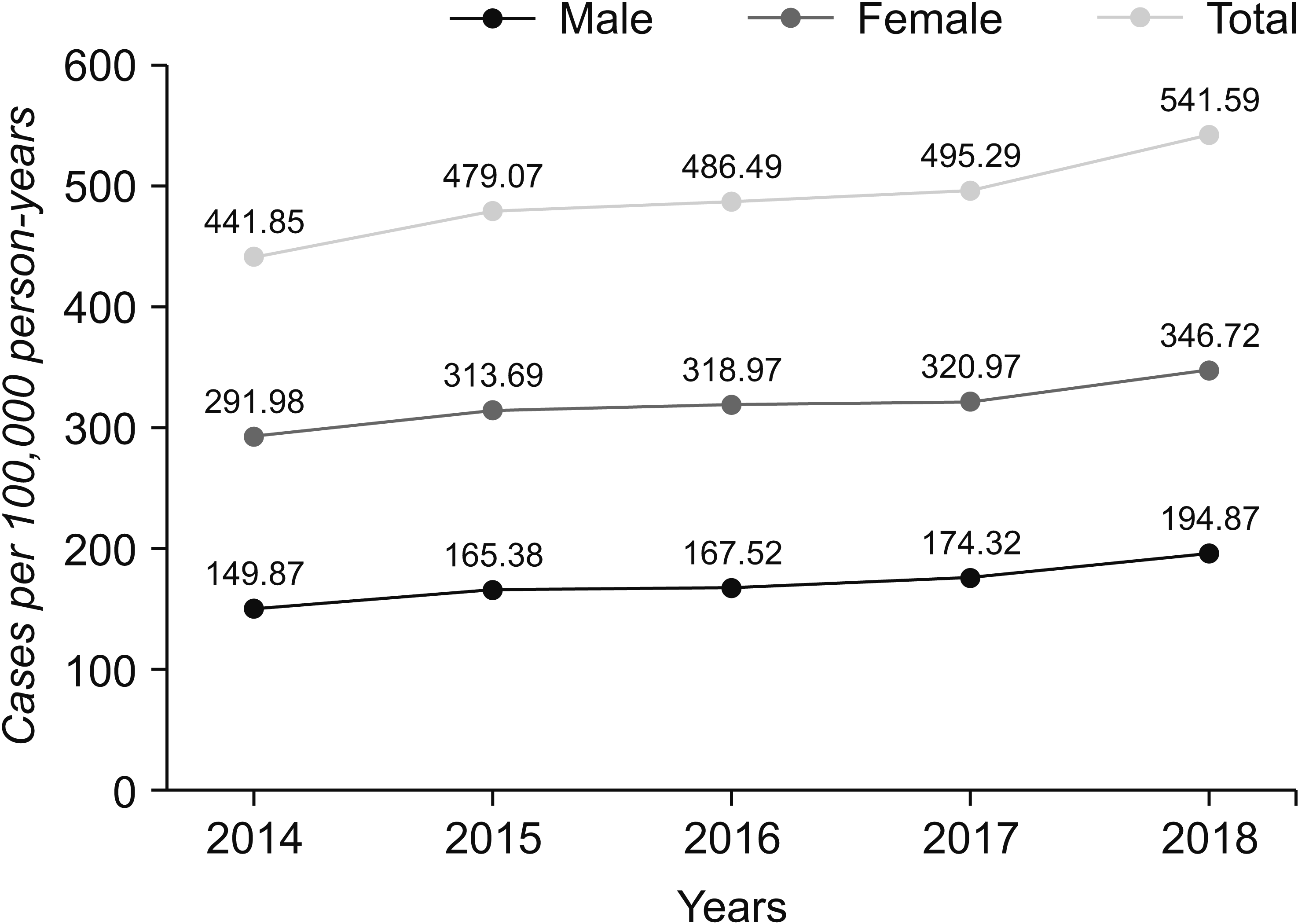
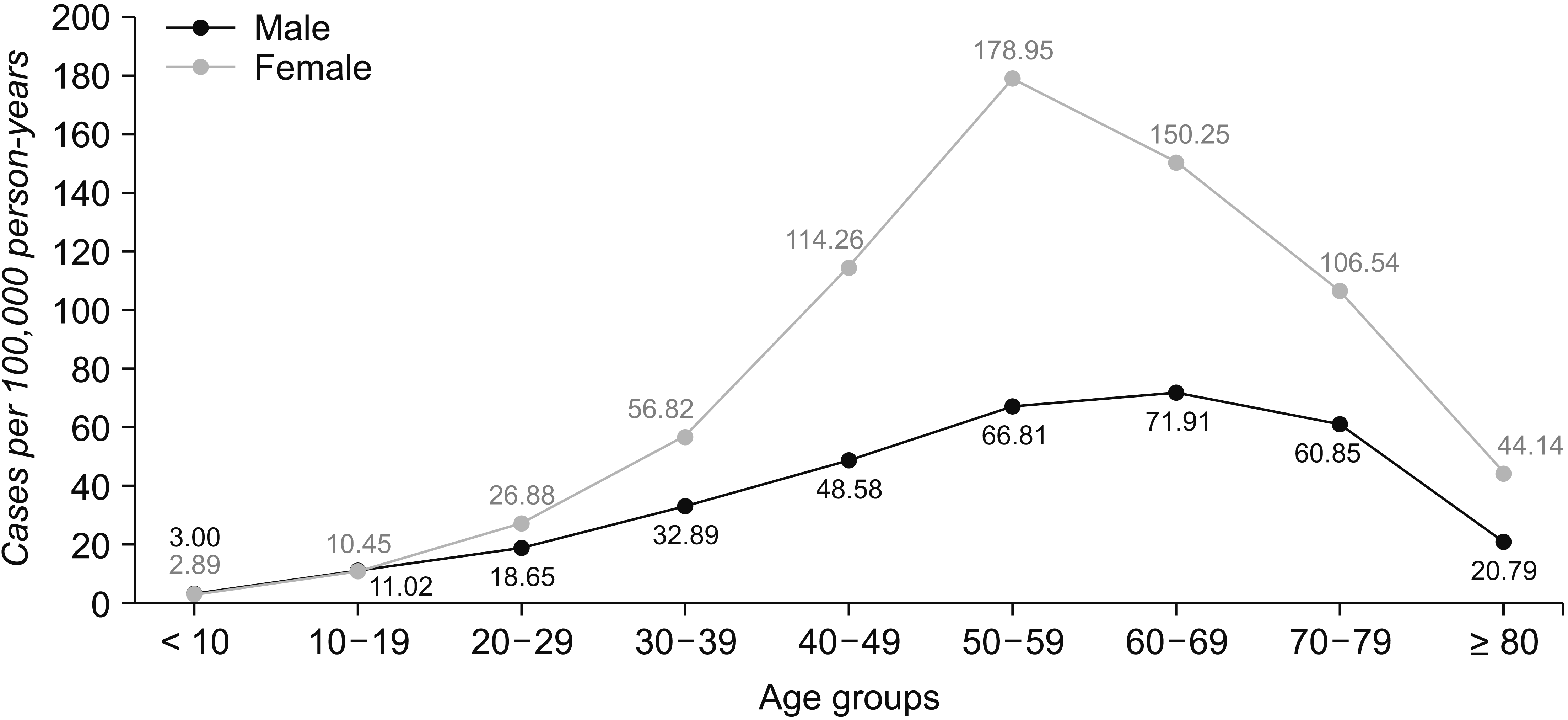
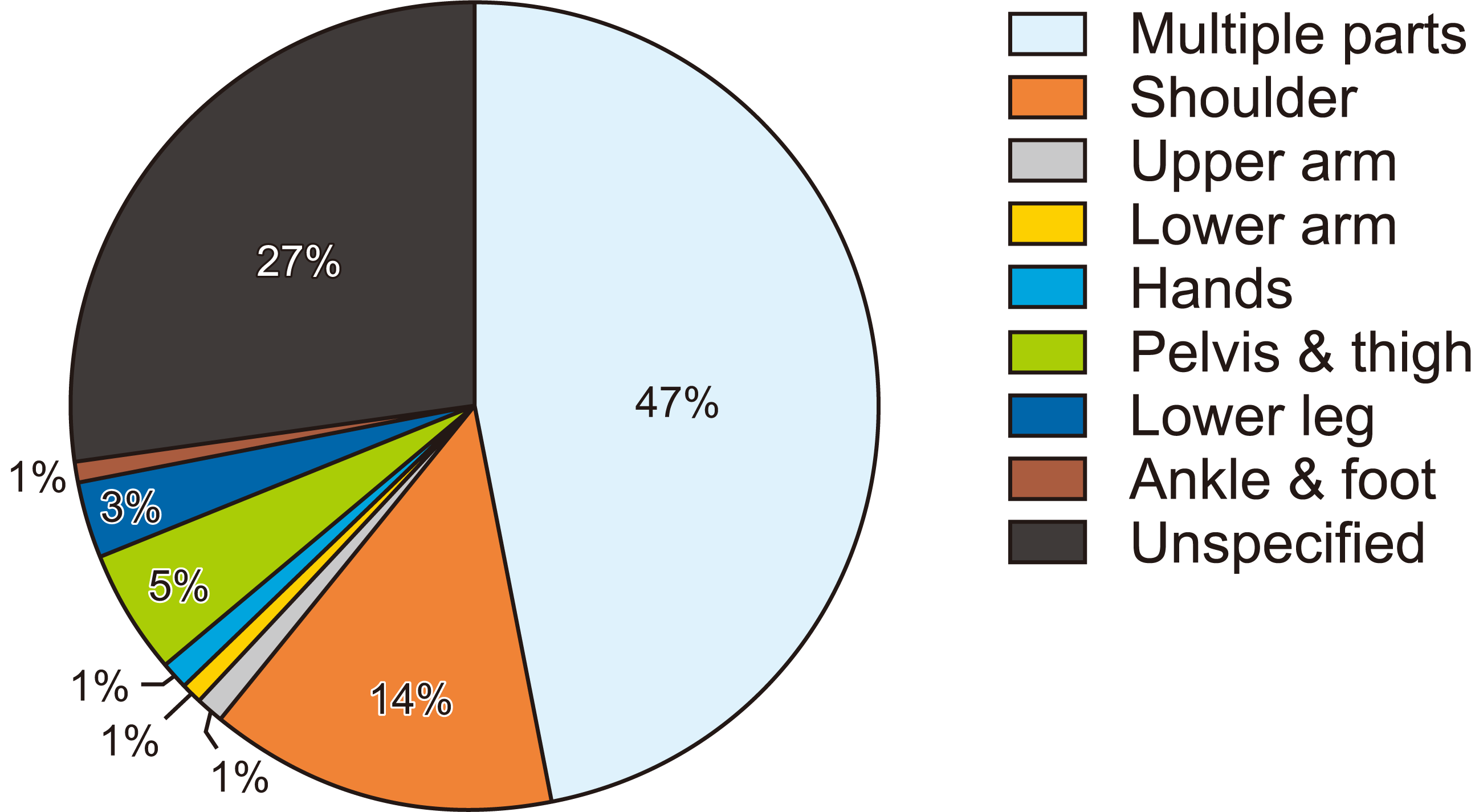
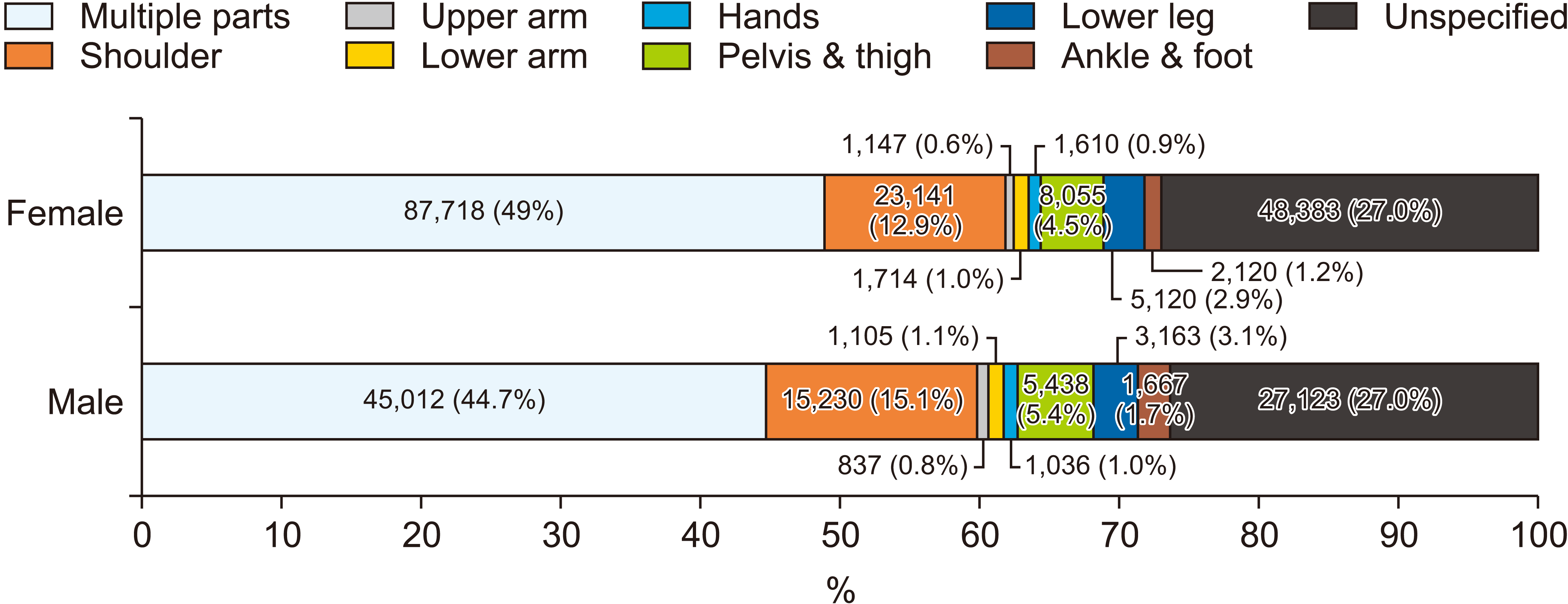
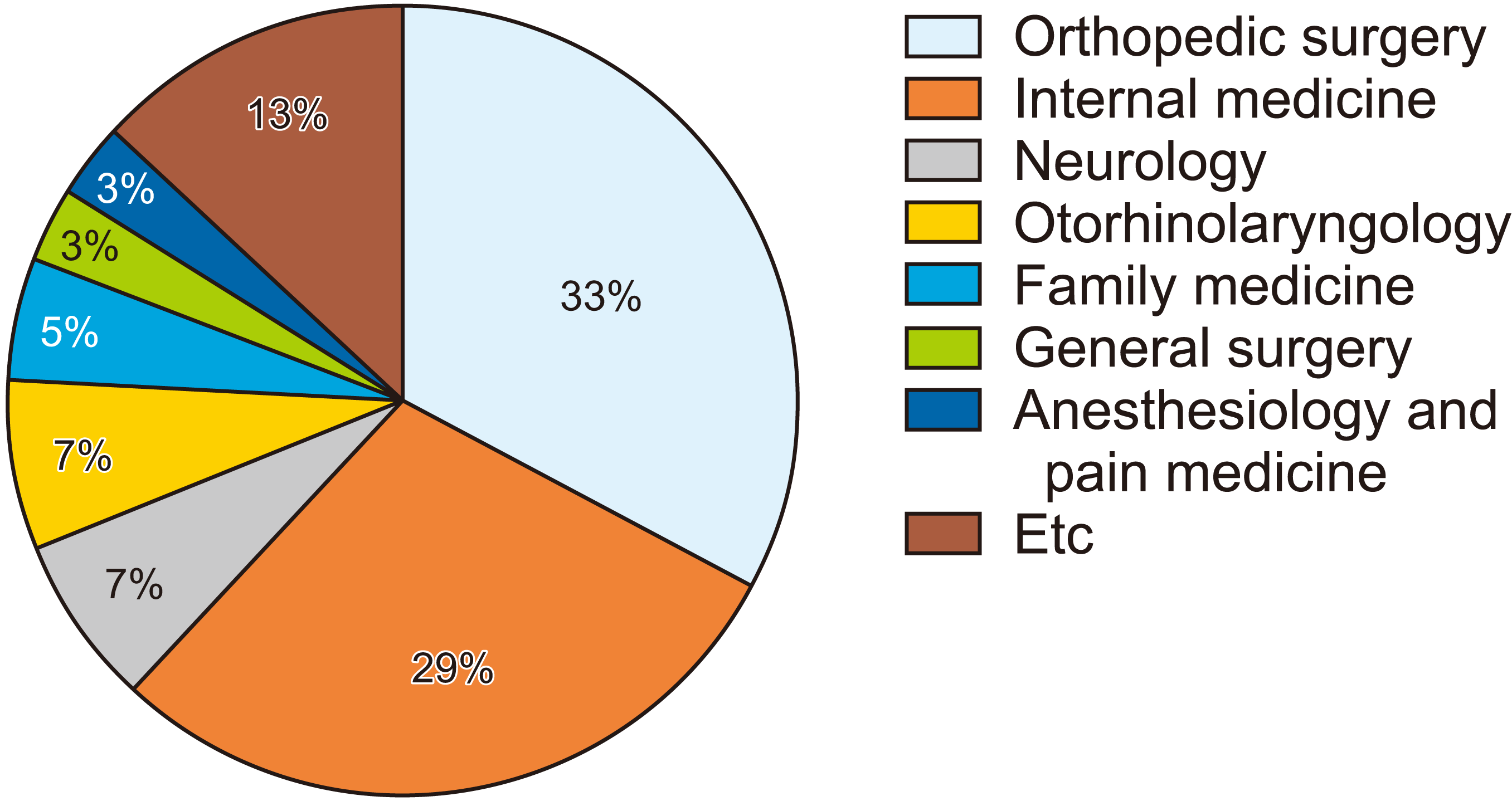
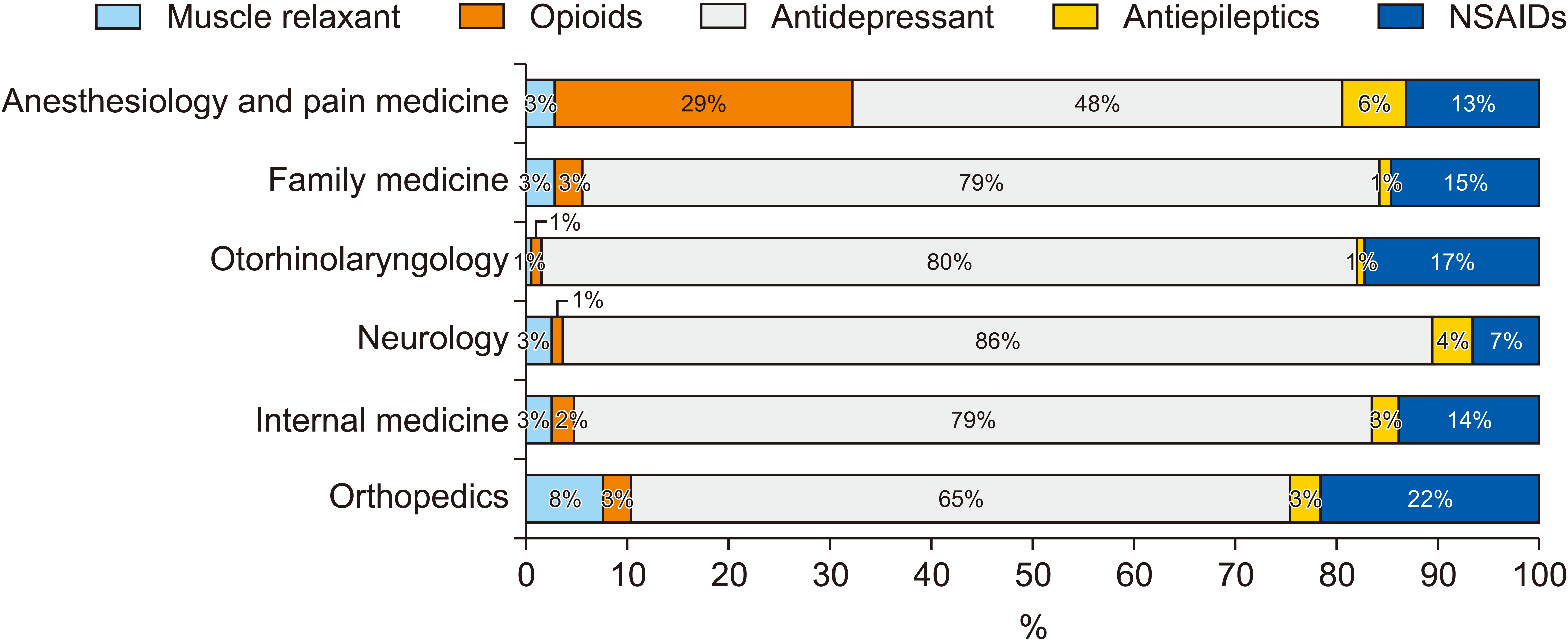
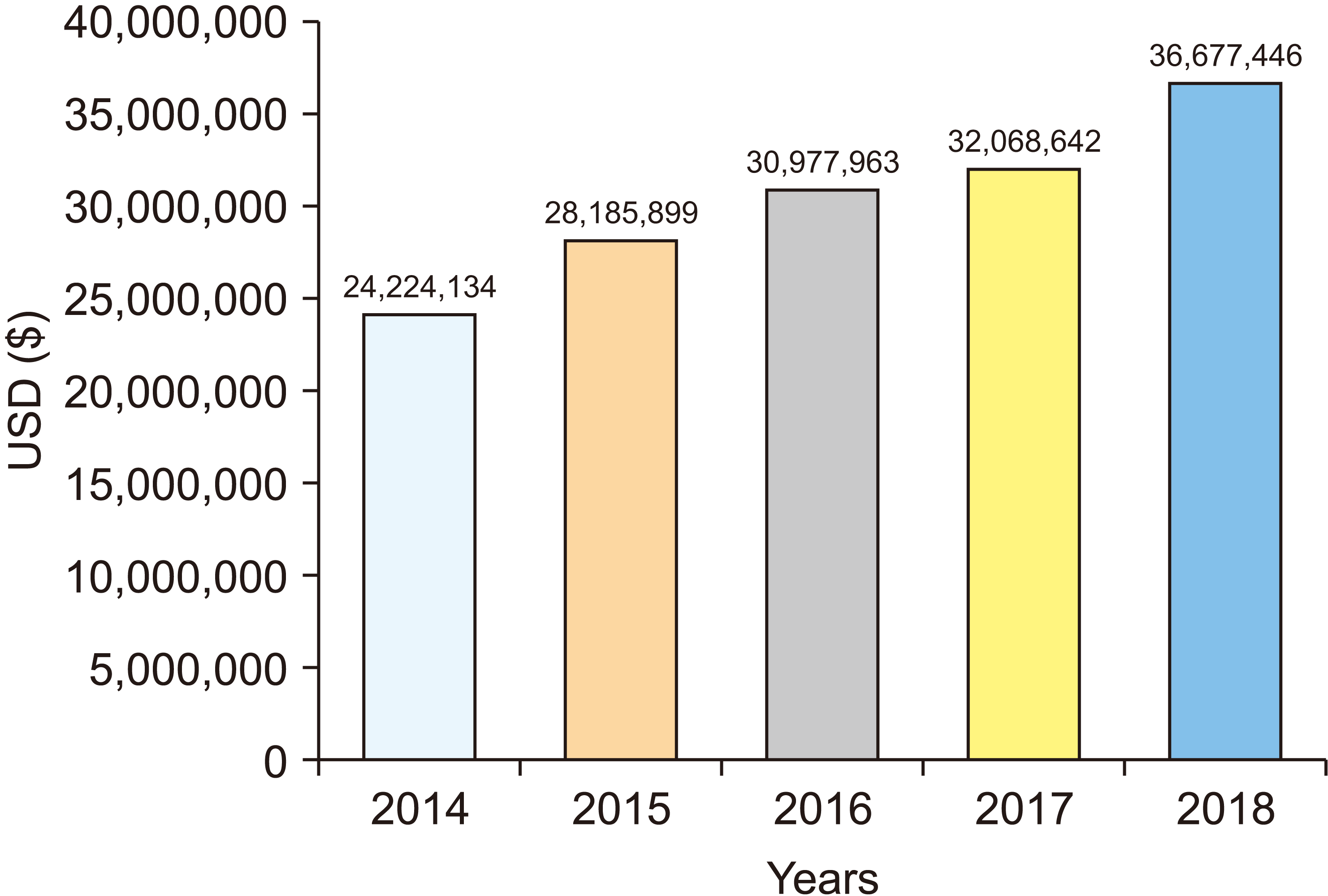
 XML Download
XML Download